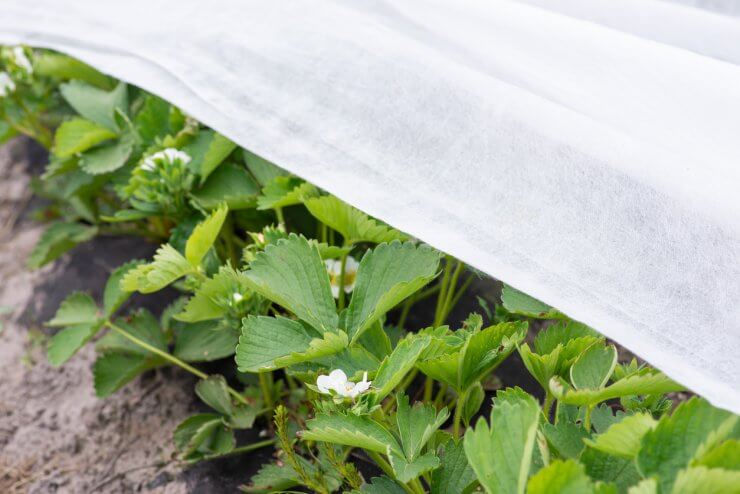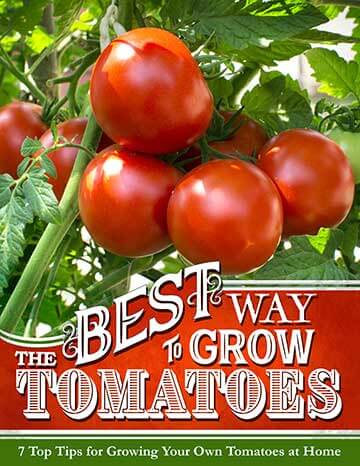
Your flowers, crops and landscaping need as much care as you do when enduring the cold, dark seasons. You can mix-and-match these techniques, which align with organic and eco-friendly growing values.
Place Organic Mulch
Organic mulch is the perfect option for protecting your plants’ precious root systems. The mixture will likely include straw, leaves and wood chips, among other helpful brown matter. Mulch is like insulation for the most delicate parts of the plant, and it is crucial for keeping everything aboveground sturdy and resilient.
You might have heard of rubber mulch, which you should avoid at all costs. While it adds a pop of color to a predominantly green yard, the pieces slowly degrade and put plastics and chemicals into your soil.
Plan You Garden Strategically
If you plant sensitive species in the cold, you could put them in safer locations and use planning to increase their chances of survival. Place vulnerable plants in pots or near larger plants and walls. The pots help with stability, and the natural barriers serve as windbreaks protecting less-developed species.
You can also research to uncover more about your climate and plan the garden accordingly. Here are a few frames of reference you can use:
- Frost zones to plan irrigation and avoid susceptible spots
- Risk maps that use data to help you understand historical temperatures and trends
- Weather apps to see extreme temperatures develop in real time
- Frost dates to know your preparation deadlines
- South-facing angles to harness the most sunlight
Install Row Covers
Row covers are like warm coats for your plants. They are lightweight homes to protect plants from the worst impacts of icy temperatures. The material should be breathable so plants do not suffocate. Jute or cotton will work. Any crop covering will help — you can even use bed sheets or other spare fabrics to avoid purchasing row covers.
These shields trap heat, so your plants have an extra layer of security against the cold. The covers are thin enough to continue letting sunlight in, so moisture should still accumulate while the plants get their daily dose of light.
Use Cold Frames and Grow Tents
These coverings are like having greenhouses in your garden rows without needing the infrastructure. They act similarly to row covers — letting light in and containing warmth. Cold frames are easy to DIY using environmentally conscious materials like reclaimed wood or recycled plastics. You can also purchase premade grow tents.
These are more durable structures compared to row covers, and many have lids or movable parts that make the plants simpler to access if necessary. Despite the name, you can also keep cold frames up year-round if you find it benefits the garden in your climate.
Choose Plants Selectively
You may have specific plants and crops you love to have around. But, if your region is prone to intense freezes, you may need to choose frost-resistant plants for the colder parts of the year. While you may forgo a few favorites, you’ll be happier having a healthy, productive garden.
Many local Departments of Agriculture have resources to tell you the best flowers and produce for your area each season. Some plants are known for their hardiness, including:
- Pansies
- Carrots
- Kale
- Snapdragons
- Cabbage
- Violets
- Turnips
Selecting these varieties provides multiple benefits. You’ll increase biodiversity by choosing native plants, which attract pollinators and other helpful species. Native plantings strengthen your garden by dispersing nutrients and requiring less water. They also combat the toxic impacts of the average lawn, which saps resources and nutrients from the earth.
Water and Supplement Wisely
Before determining water needs, you need to learn more about where you live. Frost and ice can bring equally dry and wet conditions for your soil, making root rot and suffocation similarly plausible. However, you should always water before the temperature gets below freezing. You want your garden to absorb as much as possible, and it can’t do that if it becomes ice first.
Watering before low temperatures hit will keep soils moist enough to hold additional warmth, especially as the evening hits. Wise watering also considers the soil makeup. Sandy soil is looser and airier, so it will hold onto moisture less effectively than loamy compositions.
With some help, all soil becomes better at absorbing water and nutrients. Avoid chemical fertilizers and opt for organic options or compost. Supplementing soil with these resources makes your garden thrive no matter how short the days are.
Organic Wisdom During Winter
You don’t need copious chemicals or invasive gardening techniques to save plants from ice. All you need is some planning and attentiveness. If you’ve spent years building relationships with your plants, you’ll want to make sure they’re protected when the temperature drops.
Discover 7 top tips for growing, harvesting, and enjoying tomatoes from your home garden—when you access the FREE guide The Best Way to Grow Tomatoes, right now!




